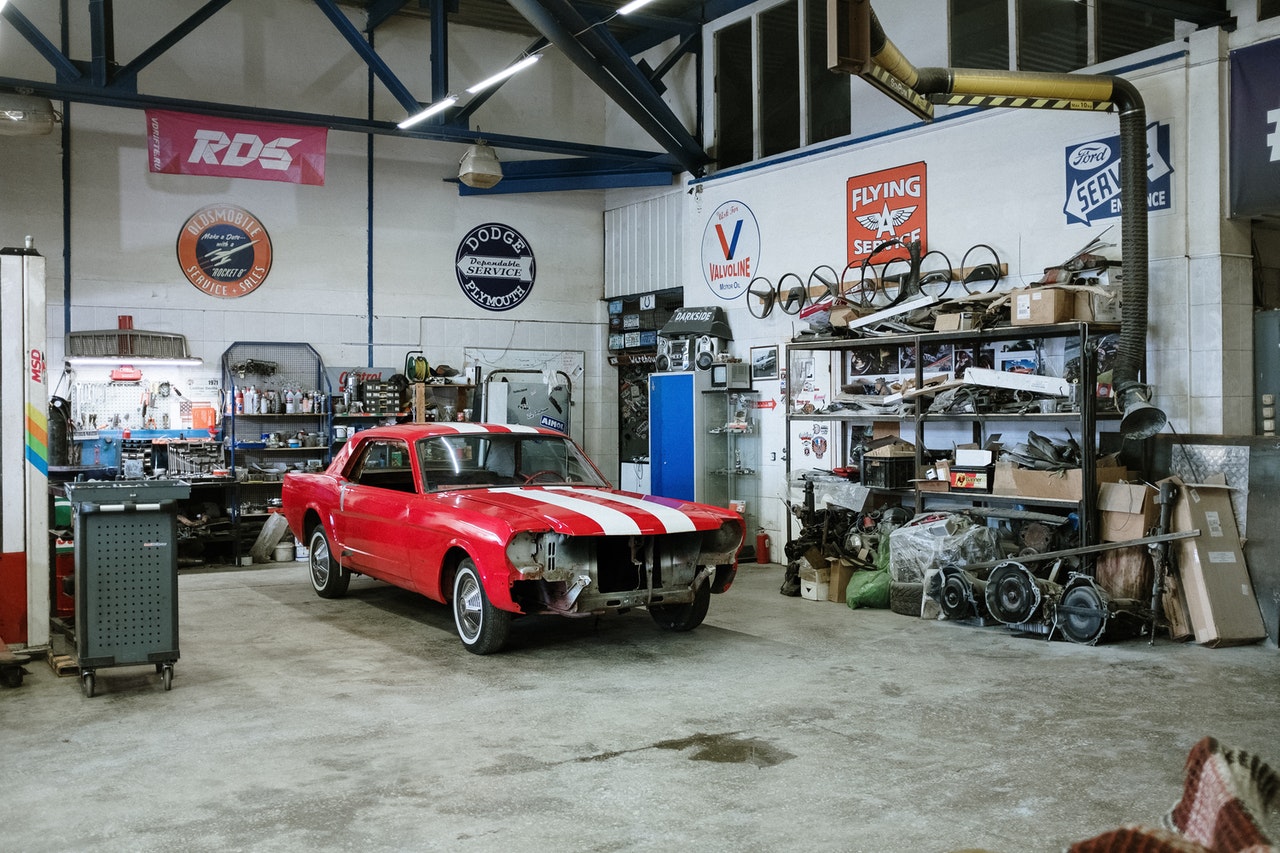The shift in weather from fall to winter does not go unnoticed by many and signifies the need to prepare for the upcoming snow and ice. This means that homeowners usually need to get started on cleaning gutters, winterizing the lawn, prepping their vehicles, and making sure their garages are inhabitable.
Speaking of garages, they should be at the top of every homeowner’s winterizing list. Honestly, with just a few simple changes, most garages will easily become winterproof and a pleasure to be in during winter. Apart from being more pleasant, it will protect them from moisture and cold damage during the chilly months. Sure, it takes a bit of effort, but winterization can make a great deal of difference when it starts to snow.
In this article, we'll go over a few things you can do to warm up your garage short of installing a propane heater or resorting to an old-fashioned wood-burning stove.
Why Is Winterizing Your Garage Important?
There are several reasons why you should winterize your garage. If your garage is not insulated, cold air can damage your car, tools, and other equipment. However, that’s not the only damage the cold can do.
A few other reasons to winterize your garage include but aren’t limited to:
- Making the garage habitable – If you spend time in the garage during the winter, winterizing it will help warm up the environment, which means you can do some work in it. Even if you don’t work in the garage, it is easier to walk up to your car in a warmer garage compared to one that’s freezing.
- Protect pipes – If you have water pipes running through the garage, keeping them warm is key to ensuring they don’t burst. A busted pipe can cause severe damage to your plumbing and everything in the garage.
- Storage protection – Garages tend to serve as storage for many homeowners. Winterizing will help keep your things in the garage safe from extreme cold. Some methods as we'll soon discuss will also help keep moisture out of the garage as well.
Add Garage Door Insulation
Insulating the garage door helps to keep warm air in and requires taking a couple of steps. First, you should measure the garage door to determine its size. Once you have an approximate measurement, cut the insulation to the correct size.
You may use a utility knife or a straightedge to cut the panels. Make sure to use gloves and protective eyewear. Make sure to measure each panel separately before starting.
However, if your garage door is already insulated, check to ensure it isn’t damaged before re-insulating it.
Seal Air Leaks
A huge key to keeping your garage toasty warm is to keep all the cold air out. So, the next step in winter-proofing your garage is to seal air leaks. Hot air naturally flows to cooler places. Insulation provides effective resistance to heat flow but if there are air leaks, garage insulation will never work as well.
Check for leaks across the garage and seal them. Sealing leaks and insulating the garage door can help you save up to 10% on energy costs. You will also want to consider installing a dehumidifier in your garage to reduce the humidity levels.
Choose An Insulation Kit With The Right R-value
It is essential to consider the R-value of your insulation kit. A high R-value indicates that the material effectively stops the flow of heat. The higher the R-value, the better the insulation, which means it is better at containing the heat inside. For this purpose, a high-quality garage door with an R-value of 10 is recommended.
The R-value also applies for various other types of insulation like fiberglass batt insulation, and spray foam insulation.
Patch Up Cracks in Walls, Windows, and Doors
If you have a cold garage, an easy way to make it a little more comfortable is to caulk and fill all the cracks in the walls, doors, and windows. This easy task will help keep your garage warmer and also lower your energy bill. Caulk will also help keep out pests and insects. This task is best completed when the weather is mild. The next step is to insulate the walls.
Insulate The Exterior Garage Walls
Insulating the exterior garage walls helps minimize the cold from seeping into the space. However, it also helps keep the hot air in the garage from making it to the other rooms inside the home.
When insulating the walls, you’ll also want to seal any switches, outlets, and other fixtures through which cold air can get in. Cold air can get in through these areas if they are not adequately sealed.
Rigid foam is an excellent choice. The insulation can be bought in four-by-eight-foot sheets, ranging in thickness from 0.5 to 4 inches. Its moisture-resistant nature makes it perfect for garage doors and walls.
Alternatively, Use Reflective Insulation
Adding reflective insulation to your garage can help keep it warmer in the winter and cooler in the summer. The product comes in the form of a rigid board or a roll with a reflective aluminum coating on one or both sides.
Because this material is highly reflective, it can keep a garage up to twenty degrees warmer than the temperature outside!
Invest In An Insulated Garage Door
There are several advantages to buying an insulated garage door. This type of garage door has a higher R-value than the non-insulated variety. The higher the R-value, the warmer it will be inside your garage.
R-values are typically measured between eight to sixteen, and higher values mean a warmer garage. However, remember that the thermal resistance will vary based on the thickness of the panel and the materials used in the frame.
Radiant heating
When installing a radiant heating system for your garage, be sure to buy a model designed for the size of the space you have in your garage. This way, you'll avoid any cold spots. This type of heating is quiet, doesn't create toxic fumes, and does not reduce indoor air quality. Although it's more expensive than forced-air heating, radiant heating can save you a considerable amount of money in terms of utility bills.
The price of a radiant heater will depend on the size of your garage, how you want to lay it, and the labor you hire.
Install Electric Heating Panels Or A Space Heater

Installing electric ceiling panels will help to actively warm up your garage. These one-inch-thick rectangles keep the garage at a comfortable temperature. You can also opt for garage floor heating. These two methods are similar but vary in cost and difficulty of installation. While the insulation option will help your garage stay warm in winter, the panels will be more effective at keeping the room warmer than the rest of the house.
Before choosing an electric ceiling panel, you must determine the room’s heating requirements. Remember that BTUs (British Thermal Units) measures how much heat is required to warm a room. Understanding your heating needs makes finding the right heater a lot easier.
Protect The Flooring
Sure, the flooring may not do as much as walls and doors to keep your garage any warmer but waterproofing, if not at least sealing it, will help protect the flooring for times when you start tracking in slush, snow, and mud. Winter debris can damage concrete, causing a mess and ruining other items in the garage.
Fortunately, there are quite a few garage door sealer and covering options. We’d recommend a multi-coat epoxy system, which provides the most protection and can last for years.
An epoxy-coated garage floor protects against damage caused by water and salt. Furthermore, the epoxy prevents any damage during the freezing and consequently thawing cycles. If you have started to notice cracks in your garage floor, it’s the perfect candidate for an epoxy coating.
Epoxy coatings can stand up against chemicals, gas, and oil. They do not easily stain, making keeping your garage clean easier.
Epoxy systems do also have a couple of drawbacks though. For starters, they are challenging to install and can take several days to cure. Also, this type of coating happens to be quite expensive, with professional applications running between $4 to $5 per sq/foot. A DIY installation can be cheaper, but a mistake can ruin everything.
A few other options include:
PolyasparticGarage Floor Systems – This is similar to epoxy, but the installation takes just a day. That means you can start using your garage door as soon as the same time the next day. However, it is more expensive, at around $6-$7 per square foot.
Epoxy Paint – These paint kits are cheaper than using a multi-coat epoxy flooring system, and you can do it yourself. Though they aren’t as durable, they only require a single layer of paint.
Acrylic Sealer – Now, this is another low-cost option that is something you can apply. However, it does not offer as much protection against water and salt that may enter your garage.
Final Word
As you can see, there are many ways to keep your garage toasty and warm during the winter. This will help it to be more pleasant to live in, prevent cold damage, and protect your belongings from the elements.
However, it is essential that you start with ensuring that your garage is well insulated before spending money on a heating system or electric space heaters. That way, the heater will perform more reliably and not rack up a high power bill during the colder months.





